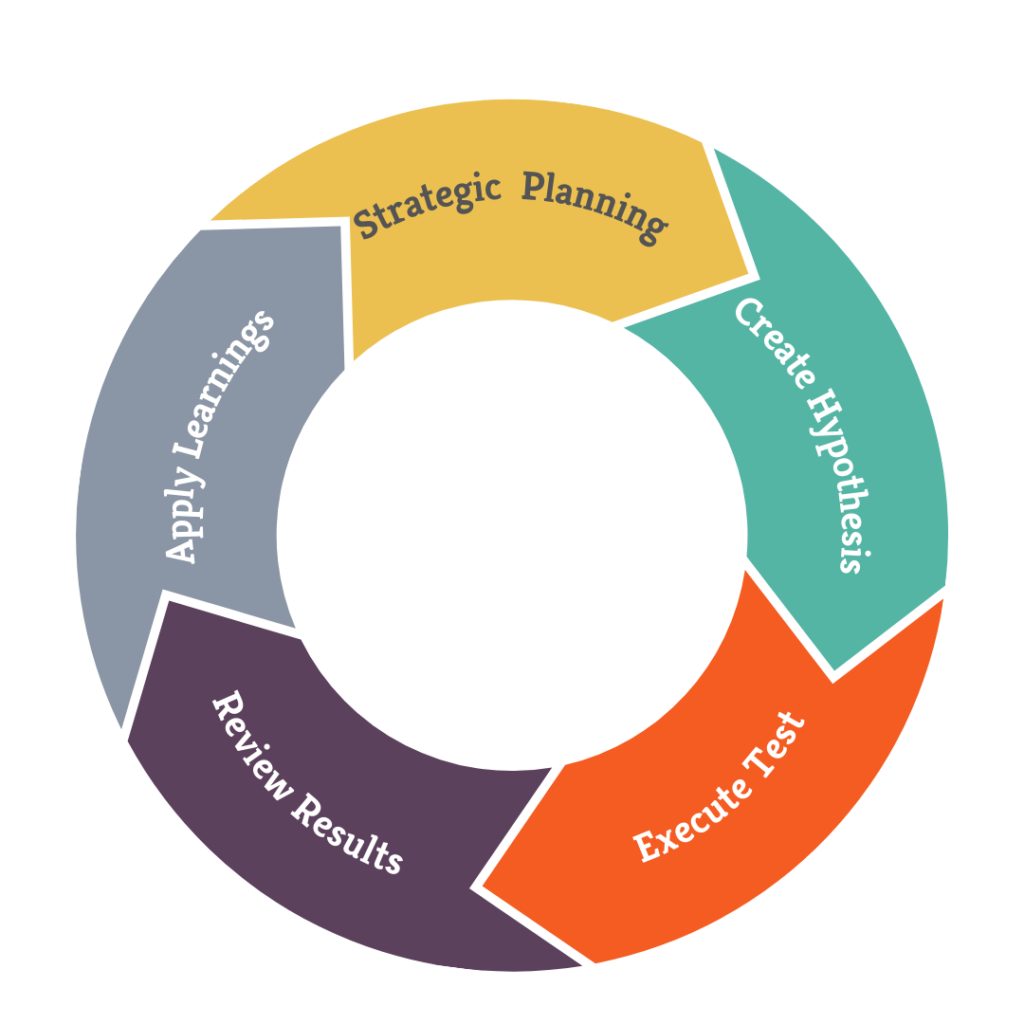
The 2022 ANA Response Rate Report reveals that email is utilized by 72% of the surveyed audience in their campaigns. Furthermore, with 82.4% of the population projected to use email in 2023, it’s evident that email marketing is a powerful tool that all organizations should be utilizing. Keeping up with the latest trends and advancements can greatly impact the success of your email campaigns.
Recently, I had the chance to participate in the 2023 ANA Email Evolution Conference, and I’m excited to share my top five takeaways, which were recurring themes across most, if not all, sessions:
- Testing is crucial to improving the performance of your email campaigns. The same old thinking equals the same old result, so it’s important for organizations to embrace a culture of testing and learning, utilizing your database as your test market. By testing different elements, such as subject lines, content, calls-to-action (CTA), and send times, you can learn what works best for your audience and improve your results over time. It’s important to keep testing even if you think you’ve found a winning formula, as what works today may not work tomorrow.
- Before you begin A/B testing, it’s important to have a hypothesis and a clear idea of what you want to test and why.
- To get accurate results, it’s important to test one element at a time.
- To get statistically significant results, it’s important to use a large enough sample size to achieve the level of confidence you want to achieve. If your list sizes are small, test elements that can be tested over several sends then aggregate the results; it just takes a bit more time to declare a winner.
- Tracking the right KPI is essential to understanding the impact of your A/B test. As an example, if you are testing subject lines, you should track open rates, while for CTA buttons, you might track click-through rates or clicks-to-conversion.
- Based on the findings of your A/B test, make changes to your strategy and roll out with the winning elements. And always continuously test and optimize your campaigns, to achieve better results.
- Remember that insights can be shared across channels. For example, if a certain type of imagery works well in emails, chances are it could also resonate with your audiences on social, banner ads and landing pages. Or if certain messaging or CTAs work well in email, why not add them to your social media creative?

Continual testing and optimizations drive stronger engagement and conversions.
2. Personalization is a key factor in successful email campaigns, but it’s important to go beyond just adding a recipient’s first name to the subject line. By using data to create detailed customer personas and delivering content that’s relevant to each segment, you can create a more personalized experience that resonates with your audience, which can lead to higher engagement and response rates.
Donor personas can also help you segment your audience, so you can send different campaigns to different groups of donors. For example, you might send a monthly giving series to one group of donors, and a special appeal for a capital campaign to a group of major donors.
It’s also important to collect data frequently and in different ways to ensure that you have a complete picture of your donors. Don’t just rely on preference centers, they are not always the most up to date; donors are dynamic, and the way you collect data should be too. Consider some of the ways to collect data below:
- Historical giving data
- Event participation
- Feedback from Surveys, Polls and Quizzes
- Reviews
- Email Engagement
3. Donor journeys are an important way to guide your audience through the customer lifecycle and create a more engaging experience. By mapping out each stage of the journey and delivering targeted messaging at each point, you can create a more seamless experience that encourages engagement and drives revenue. Automated messages and multi-touch journeys are effective ways to keep your audience engaged throughout the customer lifecycle.
Email marketing automation is the practice of utilizing technology to automate the creation and management of email campaigns. This involves setting up automated sequences of emails. For example, welcome messages or drip campaigns, as well as triggering emails in response to specific actions or behaviors, such as leaving a donation page or subscribing to a newsletter. Some of the most common journeys for nonprofit organizations include:
- New Donor Welcome Series
- New Subscriber Welcome Series
- Grateful Patient Welcome Series
- Re-engagement Campaigns
- Recurring Donor Series
- Birthday and Supporter Anniversary Series
4. Maximizing ROI with a Human-Centric Approach to AI is a great way to scale the efforts of your team. It’s no secret that Artificial Intelligence (AI) is changing the way that marketing is approached. AI can be a powerful tool in email marketing, but it’s important to balance the needs of the organization with the needs of the donor. By using generative AI to automate certain tasks and deliver personalized content, you can create a more efficient and effective email marketing strategy. However, it’s important to always keep the human element in mind and ensure that your messaging is aligned with your audience’s needs and preferences. Keep in mind that the purpose of AI is not to replace your team, but rather to streamline your workload and expand the scope of your efforts.
5. eNewsletters are a great way to keep your audience engaged and informed about your organization. By surveying your audience and delivering content that’s tailored to their interests, you can create a more engaging experience that encourages loyalty and donations. It’s also important to develop a theme and a branded template to create a consistent look and feel, and to personalize your content based on your audience’s interests and preferences. Finally, it’s important to have a plan in place to grow your subscriber list and ensure that your newsletters reach a wider audience over time.
In summary, email marketing and optimization is essential for nonprofits looking to increase their impact, build relationships with their audience, and drive engagement and action in a cost-effective and efficient way. By delivering personalized and relevant content to their supporters, nonprofits can achieve their goals and make a real difference in their communities.










